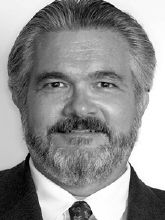On a recent shopping trip to a large department store, my wife and I noticed a Wi-Fi-enabled Crock-Pot. Given that my wife was a busy teacher and elementary-school administrator and I was a busy orthodontist while we raised a large family, Crock-Pot cookery has been a mainstay of our household, allowing us to have hot, nutritious meals ready when we got home from work. But we were both a little puzzled as to why any Crock-Pot would need Wi-Fi capability. On closer investigation, we found that the Wi-Fi allows the user to monitor and control the cooking vessel from miles away, using a smartphone. It made me realize just how far into the digital age we are.
Lecturing to dental students has been one of my greatest pleasures over the past 30 years. While fewer than 10% of them generally go on for advanced training in orthodontics, almost all of them want to learn whatever they can about orthodontics, if for no other reason than to be able to make intelligent referral decisions. One lecture I deliver to these students every year deals with the orthodontic examination and data gathering. Of course, much of that talk concerns orthodontic record taking.
Similar articles from the archive:
For years, the standard set of orthodontic records was what we generally refer to as the ABO series. Radiographs included lateral cephalometric and panoramic x-rays, augmented with any other views deemed necessary -- frontal cephalometric, submental-vertex, periapical, or bite-wing. Photographs consisted of a smiling frontal facial pose, a non-smiling or "repose" facial pose, a profile pose, and an intraoral series including frontal, right, and left buccal shots in maximum intercuspation and upper and lower occlusal views. Finally, we had to produce well-finished study models, neatly trimmed so that the teeth were in occlusion when the models were rested on their backs. Some of us preferred to have our study models accurately mounted on gnathological articulators. This series of records been the mainstay of the profession for nearly a century.
In the current academic year, I happened to deliver my records lecture immediately before attending the 2016 Invisalign Summit. That session brought me to the recognition that my material needed a complete overhaul. The most eye-opening presentation I attended at the Summit was the very last lecture, given by Zelko Relic, Align Technology's Vice President for Research and Development. His theme was that because the world is now digital, the future of orthodontic practice is digital. This is especially true for patient records.
In the new digital paradigm, intraoral scanning drives the orthodontic workflow. While old-fashioned plaster models can be used for treatment simulation, sawing plaster models apart and resetting the teeth in baseplate wax is messy, time-consuming, and remarkably inaccurate. The digital workflow allows for multiple treatment plans to be accurately visualized and compared. Scanned intraoral images can be now be readily integrated with cone-beam computed tomography to allow visual measurement and assessment of the dentition, including the roots, in three dimensions and in an accurate location within the head. These compound images can also be integrated with color digital photographs that allow a realistic visualization of every aspect of the dentofacial apparatus. Two-dimensional photographs, radiographs, and plaster models (no matter how accurately mounted), while still helpful in orthodontic diagnosis, treatment planning, and communication, are on the verge of becoming obsolete.
I have no doubt that future advances in technology will take us even further in our quest for ever-more-precise diagnoses and predictions of treatment outcomes. One such technology, which has been available for some time but is only now coming into more common clinical usage, is 3D finite element analysis. In this issue of JCO, a group of Italian authors, led by Dr. Benedetta Comba, presents an interesting article in which finite element analysis is used to assess the force systems applied during canine retraction by clear aligners, with various combinations of composite attachments and Class II elastics. This kind of comparison was practically impossible before digital records.
Staying current with rapidly advancing technologies can be a challenge for the practicing orthodontist, much more than for the home cook. Articles like the one by Dr. Comba and colleagues help us stay on the cutting edge. And while conventional radiographs, analog photographs, and plaster models may have served us well for the past 100 years, the new digital paradigm of orthodontic records will serve us even better long into the future.
RGK


